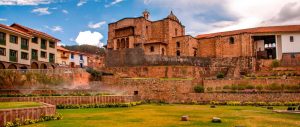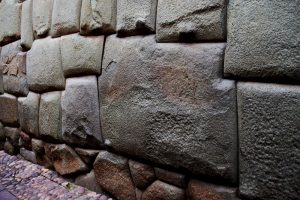7 THINGS TO DO IN CUSCO

Cusco is the former capital of Tahuaninsuyo, the center of the empire of the four regions and the "navel of the world." From this city deployed one of the most remarkable empires in the history of mankind. The Incas expanded in less than a hundred years their borders from the north of Quito in Ecuador to the far south of Santiago de Chile. In the eastern direction they reached Argentina. Although the Incas are not well known in the Western world, they were one of the greatest known ancient cultures.
1- Plaza de Armas
The Plaza de Armas of Cusco makes you fall in love as soon as you step on it. This architecture, so typical of the Andean region, is unique in the world and part of what makes Cusco a destination different tourist, they are the reflection of the passage of the Spanish conquerors through this city. And it was not to be expected that being in this magical city, the Plaza de Armas has its origin long before the Conquest. This was the point chosen to begin creating the Imperial City, which became the capital of the Inca Empire.
A huge rehabilitation program managed to rescue and rehabilitate a large part of the tremendous architectural catalog that appears in this quadrangular space: the cathedral, the Church of the Society of Jesus or the houses with wooden balconies that The closed are now a perfect setting to sit and rest with the sunset light or start any urban walk in search of the intimacies of Cusco.
From here you will make the main visits of the city, if you don't want to complicate yourself, here you can book an excursion to the essential places in the historic center of Cuzco and the surroundings. < / p>
2- The great Koricancha temple

3- The San Blas Neighborhood
The San Blas neighborhood is one of the obligatory places to visit on your trip to Cusco. Its steep and cobbled streets, the incredible works of art by its famous artisans and a viewpoint from which to see the entire city of Cusco are just some of the great attractions that attract hundreds of tourists to this neighborhood every day.
4- The Archbishop's Palace and the 12-angle stone
The stone of the 12 angles today is as famous as Machupicchu itself or the long-traveled Inca trail, the immense stone of approximately 6 tons, is made of green Diorite, a stone used in almost all Inca constructions, Although by the place where it is located, there are also stones of 13 and 14 angles, these do not resemble the perfection of the famous stone of the 12 angles, so much is the perfection of their joints that it is not possible to pass even one needle, and after some studies, experts considered that if this stone is removed from the wall that contains it, most likely the entire construction could collapse

5- Sacsayhuamán
The archaeological park Sacsayhuamán is located two kilometers from the city of Cusco , on the top of a mountain; it has a total area of approximately 3,000 hectares. It houses a great variety of Andean flora and fauna; Llamas, hawks and kestrels can be seen very frequently in this place.
In Sacsayhuamán the great cults and festivities of the Sun God were celebrated (in the following image I will tell you details of the Inti Raymi). The visit to the site is usually completed with three smaller, but also impressive, nearby ruins that speak of the civil and religious engineering infrastructures with which the Incas endowed their empire. It is about Tambo Machay, a system of canals, aqueducts and rafts that are believed to have been destined to the cult of water; Pukapukara, a kind of post stop and surveillance center that served the imperial road to Ollantaytambo , and Qenko , another ceremonial center full of channels and engravings that represent totemic animals for the Incas: the puma, the condor and the llama.

6- The work of Martín Chambi
One of the essential visits in Cusco is the permanent exhibition of the work of the great Peruvian photographer Martín Chambi , located on the second floor of Scotia Bank (Palace of the Inca Túpac Yupanqui, Maruri street, 315).
Martín Chambi, native of Puno (1891), is the first photographer of indigenous blood who portrayed his people, their customs, their daily life and managed to capture in each photo the mysticism of the Andean culture.

7- San Pedro Market
The Mercado Central de Cusco or Mercado de San Pedro was built in 1925 and is the oldest in the city. The construction was directed by Gustav Eiffel, the same one who built the Eiffel Tower in Paris and inside you will see stalls of all kinds of typical Peruvian products such as passion fruit, pineapple, corn, yucca, Andean potato and other more common in all markets.
It is also a good place to buy handicrafts and try typical local dishes at one of the food stalls.












